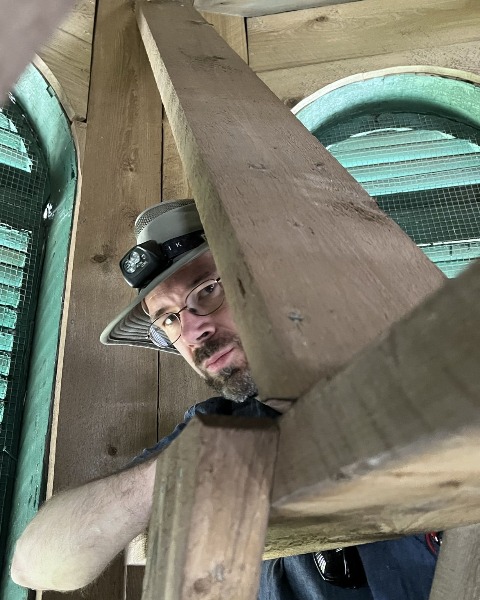English
Track 2/Volet 2
(CS2.1) When it goes wrong: destructive masonry failures due to mortar structural incompatibility
Friday, November 15, 2024
8:30 AM - 8:40 AM EST

Lucy J. Davis
PhD Student
McGill University, Canada
Tom Morrison, PEng, PhD, CAHP, APT-RP, CSCE, ISCARSAH
Principal
Heritage Standing Inc., Canada
Speaker(s)
Session Chair(s)
With limited access to old buildings, experimental campaigns focus on testing samples replicated to best represent the built environment – including using the same mortar recipes and traditional construction techniques, just with today’s materials. These experiments are crucial to gather information on material characteristics, much needed in adaptive reuse projects. However, modern materials cannot perfectly replicate the conditions in old buildings and can have disastrous effects when used in conservation applications when used incorrectly. Choosing the correct materials in interventions is crucial; in the race to meet contemporary requirements, shortcuts may bring unintended compatibility consequences.
This presentation investigates mortar structural incompatibility through an ongoing research project at McGill University, focusing on solutions for meeting contemporary requirements. This research has been uniquely able to incorporate testing on both materials extracted from existing buildings as well as replicated samples, using new materials and traditional ones. The extracted material, removed from old/heritage buildings across Montréal provides useful information on material characteristics and properties we encounter on-site. Replicated samples use modern materials, including hand-pressed bricks and a weakened lime-based restoration mortar with similar properties to old materials, and built with traditional techniques. Replicated samples also provide insight into how modern materials might behave as part of an intervention. Experimental tests were conducted including diagonal compression tests and uniaxial compression tests of masonry prisms. Results from these tests can show just how different our modern materials can act – changing the masonry behaviour completely. The old materials show low strength but high deformation capacity, and new materials show high strength but sometimes explosive behaviour. Driven by the structural compatibility of the mortar, this campaign opens further questions into if our intervention designs are behaving as we intended them to.
This presentation dives into the results of the experimental campaign and potential impacts of mortar incompatibility in alteration measures by posing questions such as:
• Why do the typical tests of slump and compression not give us the whole picture?
• How does restoration mortar behave long-term in preservation projects?
• What types of alterations or strengthening measures can add deformation capacity back to the system?
Our research aims to add to the understanding of the behaviour of Eastern Canada’s old unreinforced masonry (URM) masonry buildings through material and structural characterization and to continue to diminish barriers faced by practitioners and researchers working with these structures.
This presentation investigates mortar structural incompatibility through an ongoing research project at McGill University, focusing on solutions for meeting contemporary requirements. This research has been uniquely able to incorporate testing on both materials extracted from existing buildings as well as replicated samples, using new materials and traditional ones. The extracted material, removed from old/heritage buildings across Montréal provides useful information on material characteristics and properties we encounter on-site. Replicated samples use modern materials, including hand-pressed bricks and a weakened lime-based restoration mortar with similar properties to old materials, and built with traditional techniques. Replicated samples also provide insight into how modern materials might behave as part of an intervention. Experimental tests were conducted including diagonal compression tests and uniaxial compression tests of masonry prisms. Results from these tests can show just how different our modern materials can act – changing the masonry behaviour completely. The old materials show low strength but high deformation capacity, and new materials show high strength but sometimes explosive behaviour. Driven by the structural compatibility of the mortar, this campaign opens further questions into if our intervention designs are behaving as we intended them to.
This presentation dives into the results of the experimental campaign and potential impacts of mortar incompatibility in alteration measures by posing questions such as:
• Why do the typical tests of slump and compression not give us the whole picture?
• How does restoration mortar behave long-term in preservation projects?
• What types of alterations or strengthening measures can add deformation capacity back to the system?
Our research aims to add to the understanding of the behaviour of Eastern Canada’s old unreinforced masonry (URM) masonry buildings through material and structural characterization and to continue to diminish barriers faced by practitioners and researchers working with these structures.
Learning Objectives:
- discuss the potential consequences in structural behaviour from using incompatible materials.
- define the significance of adapting compatible intervention materials for strengthening and seismic retrofitting applications.
- understand the challenges associated with conducting destructive experimental tests on old unreinforced masonry (URM) buildings and the limitations of available data on their material characteristics.
- identify how to remove specimens from existing buildings for laboratory testing.

.jpg)
.jpg)


